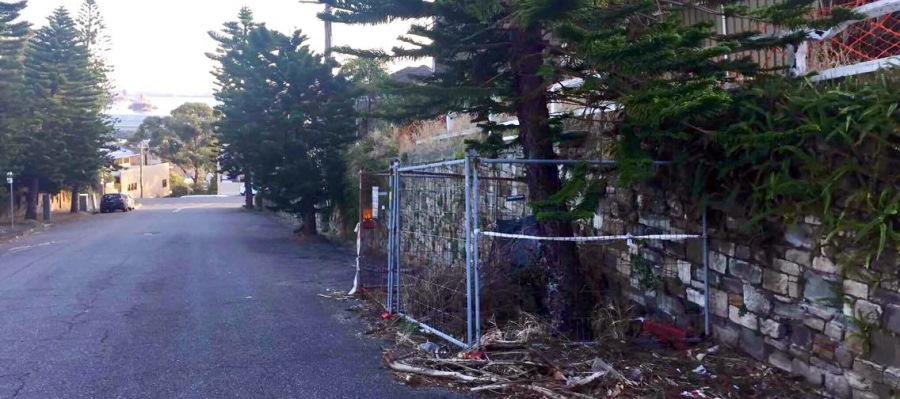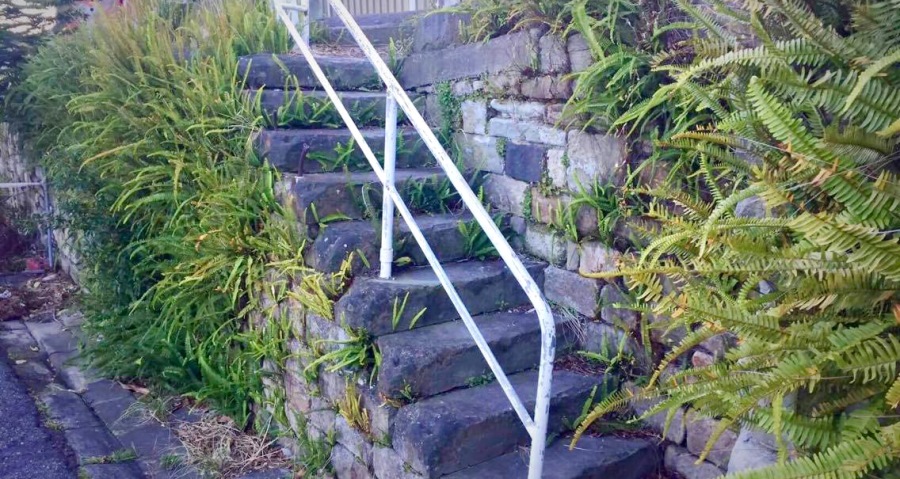
Renewal of historic wall under way
12 Sept 2017
Newcastle City Council has started shoring up one of the city's longest-standing retaining walls -- on Brown St, The Hill.
Time, gravity and nature have conspired to damage the 105m sandstone wall, which has propped up the eastern edge of the sloping roadway between Church and Tyrell streets since 1883.
Soil anchors will be used to pin it to a more stable sub-base and vegetation removed to address further safety concerns and reveal the masonry's former glory.

The wall is thought to have been built in 1883, the year the Brooklyn Bridge opened, after Council approved its construction - and that of another wall opposite - at a meeting in December 1882.
The reinforcing soil anchors will have minimal visual impact so as not to affect the heritage significance of The Hill Heritage Conservation area.
"This $600,000 project will reinforce the wall while preserving a conspicuous piece of Newcastle's history," Newcastle City Council Interim CEO Jeremy Bath said.
"Standing three metres tall at its highest point, it would have taken some toil to put all those stones in place on such a steep gradient.
"More than 130 years on, the materials in the wall have deteriorated to the point where the wall is at risk of falling and a section of the top of the wall has failed due to tree root damage.
"The project will restore the wall's structural integrity, as well as its original look, and improve the safety of the area adjacent and two stairways."
New kerbs, paths, fencing and landscaping will be part of the 10-week project.
Steel steps will be built over existing stone stairs - without obscuring them - to providing safe access to the road.

Investigations carried out last year identified the anchors as the best way to stabilise the retaining wall, which will require the removal of a single Cotton Palm tree.
A review of environmental factors for the proposed upgrade was completed and approved earlier this year.
Council is carrying out three other retaining wall renewal projects over the next few months.
The work involves repair or replacement of existing retaining walls and associated structures to provide structural stability.
Concrete stairs in Barker Street, The Hill, a copper log retaining wall on Marshall Street, Garden Suburb, will be replaced and a five-metre section of the retaining wall on the northern side of Newcastle Hill Tennis Courts will be repaired.
During Newcastle's convict era, Brown St was considered the dividing line between "Government Town" in the east and the Australian Agricultural Company's land grant to the west, according to the 22 June 1953 edition of the Newcastle Sun, and was named after AA Company official Alexander Brown.
December 20 1882 edition of Newcastle Herald
"Motions in Pursuance of Notice
The Mayor moved -- "That the report of the Improvement Committee, dated 4th December 1882 be now adopted.
"The report recommended that plan and specification be prepared for a retaining wall on east side of Upper Brown St, providing for steps and suitable entrances to each property; also, a retaining wall on west side of same street, with suitable fences on top."











